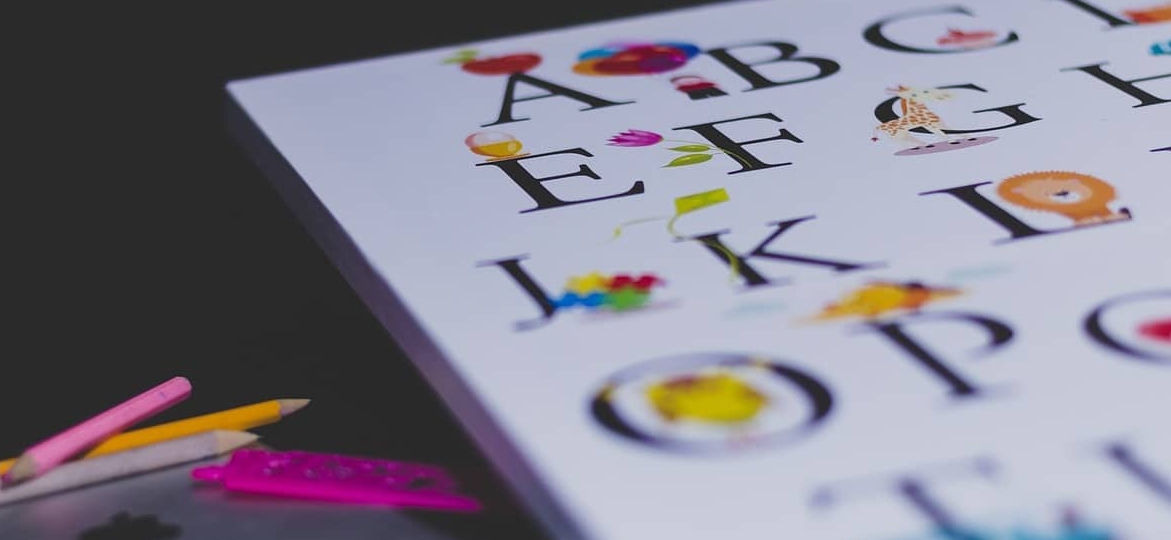Do you want to improve your pronunciation in Spanish and with your own materials? You have probably heard that to improve the pronunciation in Spanish the most important thing is to speak. Many times, we know the grammar, plenty of the vocabulary and we understand most of the things, but when we speak, we feel we are not fluent, that something is missing. Proper pronunciation is essential in Spanish. If there is an aspect in Spanish where the rules are very clear, it is in the pronunciation. But how do we do it? In this article we will see:
- The importance of having good Spanish pronunciation;
- Tips for a perfect Spanish pronunciation;
- Phonetic symbols for consonants, vowels and diphthongs in Spanish;
- The best sites with pronunciation exercises to practice Spanish;
- Learn Spanish online with General Español!
The importance of having a good Spanish pronunciation
Wondering if it is hard to learn Spanish is normal, but in reality it is not such a difficult language. However, the pronunciation can cause some problems because of the difference in intonation between the two languages. We usually focus on studying the grammar and vocabulary and, mistakenly, leave aside the pronunciation.
Although the main thing about communicating in another language, if you do not have a very high level, is to make yourself understood, a bad pronunciation can affect communication. Having a good pronunciation will allow you to feel more comfortable talking in Spanish, as it gives you confidence and security to deal with any situation. But how can we learn to pronounce well in Spanish? Unfortunately, there is no magic recipe, but there are lots of methods to learn Spanish that will help you improve your pronunciation, for example by watching movies, listening to music and podcasts, and of course paying attention to the pronunciation and intonation of words. Also, it is important that you practice saying the words out loud, since we will not always know how to pronounce them the first time. Of course, if we want to learn to speak Spanish well, we must avoid being ashamed to converse in this language for fear of doing it wrong. In short, do not focus only on grammar, learn to listen, lose your fear of speaking, and practice as much as you can. In this way, you will learn more and better how to pronounce in Spanish.

Tips for a perfect Spanish pronunciation
Take note of these useful tips to obtain a better pronunciation in Spanish.
#1 Read and talk
The first rule to learn to read in Spanish with the correct pronunciation is to read aloud. This is very important because at the same time you see the words you are also hearing them and it is a way to stimulate memorization. Audiobooks are perfect for this. You can find them for free in, for example, Audible or on payment platforms such as iTunes, Cervantes.es or Spanish Audiobooks. We advise you to first listen to the audio with the text in front ad many times as you need. Then read the text imitating the intonation and pronunciation of the audio. Don’t worry if you mess up and don’t be afraid of being ridiculed or not being understood.
#2 Accent and intonation
Don’t try to lose your accent. Remember: the accent does not indicate that your pronunciation is not correct, but that you are not a native speaker of the language, which is not a problem at all! If you are too careful in hiding your accent, you will lose naturalness and fluidity. Little by little you will learn the correct pronunciation in a natural way. While it is good not to focus on your accent, it is important to focus on the Spanish accents and rules of accentuation.
#3 Pay attention to the position of your tongue
The position of your tongue will help you develop greater agility in your lips and tongue. Choose a tongue twister. For example: “erre con erre guitarra, erre con erre carril, rápido ruedan los carros, rápido el ferrocarril” and repeat it three times a day. You can do it with a pencil under your tongue. A second time exaggerating the movement of your mouth, lips and tongue and the hard time in a normal way, you will see how soon you notice improvement.
#4 Talk to a native speaker
Listen a lot to how the natives speak with videos, movies, podcasts, or music in Spanish, and repeat what you heard. Listening will allow you to appreciate the subtitles of the spoken language and to assimilate them to your pronunciation.
Phonetic symbols for consonants in Spanish
While many consonants sound the same in Spanish as they do in English, there are also many cases where they are pronounced totally different. Let’s see the alphabet pronunciation in Spanish!
| Phonetic symbol | Pronunciation | Example | Translation |
|---|---|---|---|
| /B/ | Less forceful thann in English. Very similar to the V sound. | Bien, beber. | Good, Drink. |
| /K/ | Two different sounds: Like English K before A, O, U or consonant. Soft C turns into silent TH in Spain. | Coche, cisne. | Car, Swam. |
| /CH/ | Like CH in “Cheese” | Chico, chimenea. | Boy, Chimney. |
| /D/ | Similar to English TH. | Día, Edad | Day, Age |
| /F/ | Same as in English | Fruta, café | Fruit, coffee |
| /G/ | -Like English hard H when followed by I, E. -Like English hard G when followed by A,O,U. | Gato, Garaje, Agua | Cat, Garage, Water |
| /H/ | Always silent | Hola, habitación | Hello, room |
| /J/ | Like English H. | Ojo, Jugar | Eye, Play |
| /K/ | Only used in foreign words | Kilómetros, Kiwi | Kilometres, kiwi |
| /L/ | Same as in English. | Luna, Limpio | Moon, Clean |
| /LL/ | Like Y in English | Llave, Lluvia | Key, Rain |
| /M/ | Same as in English | Mamá, Mechero | Mum, lighter |
| /N/ | Same as in English. | Noche, Nunca. | Night, Never |
| /Ñ/ | Like “Onion” in English | Niño, Señor. | Boy, Man. |
| /P/ | Similar to English but not as aspirated. | Puerta, Papá | Door, Dad |
| /Q/ | Like as English K. Always followed by U | Queso, Quinto | Cheese, Fifth |
| /R/ | Pronounced with single flap | Fuerte, Brillante | Strong, Shiny |
| /RR/ | Trilled R sound. Also happens when a word starts with R. | Perro, Ratón | Dog, Mouse |
| /S/ | Same as in English. | Serpiente, Salud | Snake, Health. |
| /T/ | Very soft. Often sounds like TH | Taza, Tenedor | Cup, Fork |
| /V/ | Very similar to sound B | Vaca, Vivienda | Cow, House |
| /W/ | Only used in foreign words | Whiski, Washington | Whisky, Washington |
| /X/ | Like Ks sound in English | Excelente, Extraordinario | Excellent, Extraordinary |
| /Y/ | Like in English | Ya, Yogur | Now, Yogurt |
| /Z/ | Like English S | Zapato, Zanahoria | Shoe, Carrot. |
Phonetic symbols for vowels and diphthongs
Vowels
Each Spanish Vowel has only one sound, which makes the spelling of this language easy to learn.
| Phonetic Symbol | Pronunciation | Example | Translation | |
|---|---|---|---|---|
| /A/ | In the Spanish word “casa”, the A sounds the same as the one that contains “father” | Casa | House | |
| /E/ | The E will always sound as the E in Elephant | Escaleras | Stairs | |
| /I/ | The I in Spanish sounds like the double E in “Cheese” | Idioma | Language | |
| /O/ | The Spanish vocal O sounds the same as “Saw” or “Ball” | Loco | Crazy | |
| /U/ | In the Spanish word “Uva”, the U sounds the same as the one that contains “Flu”. | Uva | Grape |
Diphthongs
Spanish diphthongs are composed of one opened vowel (a,e,o) and one closed one (u,i).
| Phonetic Symbol | Pronunciation | Example | Translation | |
|---|---|---|---|---|
| /ai/ /ay/ | Pronounce like “eye” | Aire, Hay. | Air, There is. | |
| /ei/ /ey/ | Pronounce like “may” | Reino, Ley | Reign, Law | |
| /oi/ /oy/ | Pronounce like “boy” | Oir, Hoy | Listen, Today. | |
| /ui/ /uy/ | Pronounce like “Louie” | Cuidar, Muy | Take care of, Very | |
| /ia/ | Pronounce like “yacht” | Estudiar | Study | |
| /ie/ | Pronounce like “ye” | Piel | Skin | |
| /io/ | Pronounce like “yo” | Accesorio | Accessorize | |
| /iu/ | Pronounce like “you” | Ciudad | City | |
| /au/ | Pronounce like “wow” | Jaula | Cage | |
| /eu/ | Pronounce like “eh + oo” | Deuda | Debt | |
| /ua/ | Pronounce like “what” | Cuatro | Four | |
| /ue/ | Pronounce like “west” | Hueso | Bone | |
| /uo/ | Pronounce like “quota” | Cuota | Quota |
Where can I find pronunciation exercises in Spanish?
Talk about some solutions and end by saying that the best is GlobalExam, to introduce the final paragraph).
StudySpanish.com
The site includes nine whole units full of multiple lessons that explain grammar with in-depth, easy-to-understand guides also has sections for pronunciation, vocabulary, and verb drills. Once you finish a lesson, you can take several quizzes with multiple-choice exercises.
SpanishDict
This is a Spanish-English dictionary, and it is considered one of the best resources to look up Spanish words. They cover everything from beginner concepts to more advanced topics. They have grammar and vocabulary practice that comes with flashcards and quizzes, and even pronunciation guides with video and audio from real native speakers.
GlobalExam
However, the best solution to practice your pronunciation are the exercises you will find on our GlobalExam website. If you think you have problems with this discipline and need some advice, we recommend all the articles that appear in our Global General section to successfully overcome the challenge of speaking well in Spanish. In this category you will find posts in which we tell you how to learn to pronounce Spanish and the methods to speak well in this language. In addition, we offer you tips and tricks to learn to read and, also, to pronounce. In this way, we have wanted to offer you the keys to a good learning of pronunciation in Spanish so that it does not suppose a challenge in the acquisition of the language.
Improve your Spanish thanks to Global General
To continue practicing your Spanish in a simple and effective way, come and see the Global General of GlobalExam . A method to learn Spanish 100% online at your own pace and according to your level and needs. The Global General offers you numerous check sheets and detailed corrections to all questions so that you can test your knowledge and improve your command of the language. If you are a beginner or have an intermediate level of Spanish, come and learn about the different academic itineraries proposed so that improving your level is a fun and effective exercise.
In addition, with GlobalExam you can optimize your skills and prepare for the DELE A1, A2, B1, B2 and C1 language exams. For this you will have at your disposal a multitude of supports and exercises with their detailed corrections, personalized monitoring and a community of students where you can share experiences. Join the more than 700,000 students who have already met their goals thanks to GlobalExam. What are you waiting for? Come and join us!



